Soviet Storm: WW2 in the East Episode Rating Graph
Mar 2010 - May 2014

Mar 2010 - May 2014
7.3

| E1 | E2 | E3 | E4 | E5 | E6 | E7 | E8 | E9 | E10 | E11 | E12 | E13 | E14 | E15 | E16 | E17 | E18 | |
|---|---|---|---|---|---|---|---|---|---|---|---|---|---|---|---|---|---|---|
| S1 |
Browse episode ratings trends for Soviet Storm: WW2 in the East. Simply click on the interactive rating graph to explore the best and worst of Soviet Storm: WW2 in the East's 18 episodes.

S1 Ep7
8.1
5th May 2010
Troops from five fronts began a coordinated offensive from Smolensk to the Sea of Azov on a broad new front 1400 km in length. In an attempt to slow down the advance of the Soviet troops, the German Command blew up bridges over big and small rivers and carried out a scorched earth policy in the occupied territories. General Vatutin, commander of the Voronezh Front, was unsuccessfully trying to break through from the Liutezh and Burkin bridgeheads. The winter was coming and the frontline looked frozen along the Dnepr.
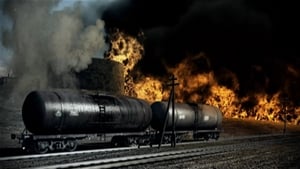
S1 Ep4
7.8
19th Apr 2010
On the 28th of June 1943 German troops launched Case Blue. They dashed towards Voronezh, Stalingrad, and Rostov-on-Don. The insufficiently embattled south sector of the Soviet-German front was breached. The retreat of the Soviet troops Eastward was going on when a famous order later called “Not a Step Back!” was issued. Special anti-retreat detachments were supposed to stop fleeing military units.
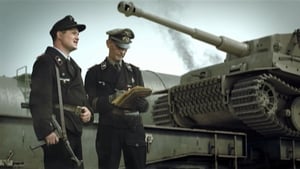
S1 Ep5
7.8
26th Apr 2010
It was April 1943. The frontline froze, but the Soviet Command was already designing plans for the Summer, paying special attention to the Kursk region. Here the troops of the Central Front had deeply bucked in the German defenses. The Germans planned to cut off the Kursk bulge with a double blow during Operation Citadel. Army Group Center was supposed to attack from the North and troops of Army Group South were to attack from the south.
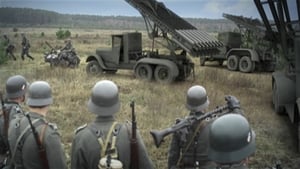
S1 Ep3
7.0
12th Apr 2010
The takeover of Leningrad was of strategic importance for the German Command. On the 8th of September 1941 the Germans reached Lake Ladoga and the city turned out to be cut off from the 'mainland'. Death from starvation began to threaten the population of Leningrad. The ships of the Baltic Fleet, anti-aircraft guns, artillery and troops of the Red Army defended the city and the 'life road' that became operable after the frosts. Multiple attempts of the Soviet Command to break though the encirclement failed one after another.

S1 Ep2
7.3
5th Apr 2010
From the very first days of the war the USSR capitol had been preparing its defense. Institutions and plants, embassies and ministries were evacuated. In order to organize the defense of Moscow and stifle the fascist offensive, Marshal Zhukov was called from Leningrad to Moscow.

S1 Ep9
7.3
7th May 2012
Stalin’s USSR was a nation obsessed with secrecy and highly experienced in the skills of espionage. But despite establishing networks of agents across Europe and the Far East in the 1930s, the Soviets were still caught off-guard by Hitler’s invasion in 1941. But thereafter, the GRU (army intelligence) and NKVD (KGB forerunner) went on to score some amazing intelligence coups in Tokyo, Washington, and even from the heart of Berlin.

S1 Ep1
7.4
29th Mar 2010
Archive film, computer-generated imagery and innovative reconstructions tell the Red Army's story of their bloody defeat to Nazi Germany in Kiev in 1941.

S1 Ep2
7.3
5th Apr 2010
From the very first days of the war the USSR capitol had been preparing its defense. Institutions and plants, embassies and ministries were evacuated. In order to organize the defense of Moscow and stifle the fascist offensive, Marshal Zhukov was called from Leningrad to Moscow.

S1 Ep3
7.0
12th Apr 2010
The takeover of Leningrad was of strategic importance for the German Command. On the 8th of September 1941 the Germans reached Lake Ladoga and the city turned out to be cut off from the 'mainland'. Death from starvation began to threaten the population of Leningrad. The ships of the Baltic Fleet, anti-aircraft guns, artillery and troops of the Red Army defended the city and the 'life road' that became operable after the frosts. Multiple attempts of the Soviet Command to break though the encirclement failed one after another.

S1 Ep4
7.8
19th Apr 2010
On the 28th of June 1943 German troops launched Case Blue. They dashed towards Voronezh, Stalingrad, and Rostov-on-Don. The insufficiently embattled south sector of the Soviet-German front was breached. The retreat of the Soviet troops Eastward was going on when a famous order later called “Not a Step Back!” was issued. Special anti-retreat detachments were supposed to stop fleeing military units.

S1 Ep5
7.8
26th Apr 2010
It was April 1943. The frontline froze, but the Soviet Command was already designing plans for the Summer, paying special attention to the Kursk region. Here the troops of the Central Front had deeply bucked in the German defenses. The Germans planned to cut off the Kursk bulge with a double blow during Operation Citadel. Army Group Center was supposed to attack from the North and troops of Army Group South were to attack from the south.
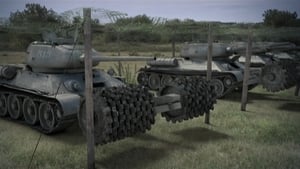
S1 Ep6
7.6
4th May 2010
Conditions of Army Group Center in Byelorussia seemed to be stable. Soviet attempts to go on the offensive near Vitebsk and Orsha failed. Waiting for the attacks of the Red Army in Ukraine, the main German forces, primarily tanks and aircraft, were transferred to the southern territories. As a response, the Soviet Command decided to strike the enemy in Byelorussia. Operation Bagration provided for the encirclement and annihilation of the enemy on the Soviet flanks near Vitebsk and Bobruysk and thus intercepting the retreat of the entire German grouping to Minsk.

S1 Ep7
8.1
5th May 2010
Troops from five fronts began a coordinated offensive from Smolensk to the Sea of Azov on a broad new front 1400 km in length. In an attempt to slow down the advance of the Soviet troops, the German Command blew up bridges over big and small rivers and carried out a scorched earth policy in the occupied territories. General Vatutin, commander of the Voronezh Front, was unsuccessfully trying to break through from the Liutezh and Burkin bridgeheads. The winter was coming and the frontline looked frozen along the Dnepr.

S1 Ep8
7.4
6th May 2010
On the 31st of January 1945 the tankers of the 1st Byelorussian Front reached the Oder river near Kostrin and Frankfurt. Berlin, the fascist beast’s lair, was in some 100 km aside. But the Soviet Command took the decision to suspend the attack on the German capital. The units needed resupply and replacement of troops, as well as time to move up the reserves. It was not until Pomerania and Silesia had been cleared of German troops that the Red Army continued its offensive.

S1 Ep9
7.3
7th May 2012
Stalin’s USSR was a nation obsessed with secrecy and highly experienced in the skills of espionage. But despite establishing networks of agents across Europe and the Far East in the 1930s, the Soviets were still caught off-guard by Hitler’s invasion in 1941. But thereafter, the GRU (army intelligence) and NKVD (KGB forerunner) went on to score some amazing intelligence coups in Tokyo, Washington, and even from the heart of Berlin.
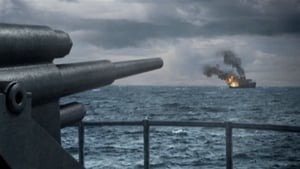
S1 Ep10
9th May 2012
The Soviet navy fought many different types of war, from coastal raids in the Black Sea, to convoy escorts in the Arctic Ocean and submarine patrols in the Baltic Sea. Their submarines would prove a particularly lethal force, and in 1945 were responsible for massive and controversial losses of life at sea.
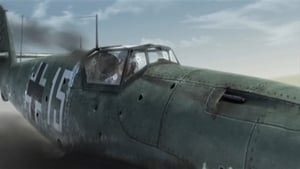
S1 Ep11
9th May 2012
The Soviet Air Force was nearly wiped out in the first days of the German invasion of the Soviet Union. But thanks to the courage of its aircrews and brilliant new aircraft designs, it began to fight back, and by 1944 dominated the skies over the Eastern Front
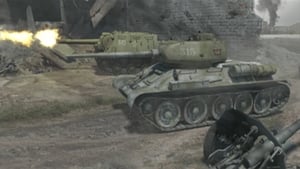
S1 Ep12
11th May 2012
In January 1945, across the snow-covered plains of Poland, the Red Army launched an overwhelming assault against the enemy that would take it to the gates of Berlin. These final months of the war in Europe were some of its darkest, as Soviet soldiers stormed German fortresses, uncovered evidence of Nazi death camps that shocked the world, and carried out their own terrible retribution against the German people.

S1 Ep13
12th May 2012
In August 1945 the Red Army launched an overwhelming assault against Japanese-occupied Manchuria. It came on the same day that Japan suffered its second devastating nuclear attack, and proved instrumental in forcing the Japanese leadership to recognise that the war was lost. This is the fascinating untold story of the Red Army’s last campaign of World War Two, which included the last battle of the war - a bloody amphibious landing on the remote Kurile Islands almost a week after Japan’s surrender.
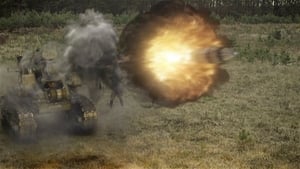
S1 Ep14
5th May 2014
The German conquests of 1941 left Hitler’s troops perilously close to the Soviet capital, Moscow. Around Rzhev terrible fighting raged as the Red Army attacked again and again to drive back the invader. Soviet troops, who suffered appalling casualties, grimly referred to these battles as ‘the Rzhev meat-grinder’.
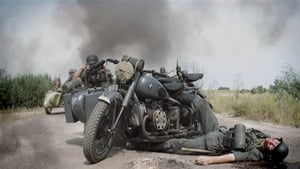
S1 Ep15
6th May 2014
As September ended, the Germans found the Dnieper line impossible to hold as the Soviet bridgeheads grew and important Dnieper towns started to fall. Finally, early in November the Soviets broke out of their bridgeheads on either side of Kiev and captured the Ukrainian capital.

S1 Ep16
7th May 2014
Hitler’s 1941 invasion of the USSR ran into some its fiercest resistance at the Black Sea ports of Odessa and Sevastopol, where Soviet elite naval infantry brigades fought doggedly to hold back German and Romanian troops. At Sevastopol, a long and bloody siege unfolded, causing the Germans to bring in some of the biggest artillery guns ever used.
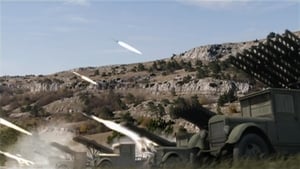
S1 Ep17
In 1942, Hitler launched his great summer offensive against the Soviet oil fields in the Caucasus. If he could seize control of this vital resource, the war might be lost. But bitter fighting in the Caucasus Mountains, and in the streets of Stalingrad, would thwart Hitler’s dream.

S1 Ep18
In 1941 German armed forces overran vast swathes of Russia, Byelorussia and Ukraine. But it was not long before the local population, encouraged by Nazi brutality, took up arms against the invader. Soviet partisans, operating under the command of a Central Headquarters in Moscow, created huge ‘no-go’ areas for German troops, and conducted a systematic campaign of sabotage against the enemy rail network.
Loading...
The first episode of Soviet Storm: WW2 in the East aired on March 29, 2010.
The last episode of Soviet Storm: WW2 in the East aired on May 07, 2014.
There are 18 episodes of Soviet Storm: WW2 in the East.
There is one season of Soviet Storm: WW2 in the East.
No.
Soviet Storm: WW2 in the East has ended.